Boat Profile

O’Day Day Sailer
A proven performer for 61 years
From Issue July 2019
T he production of small boats was booming in the 1950s on both sides of the Atlantic, and really took off in the late ’50s with the introduction of fiberglass. Famed designers Uffa Fox and George O’Day teamed up in 1956 to create the O’Day Day Sailer. Fox is credited with introducing the technique of planing to dinghy racing and designed many significant classes of boats, including the International 14. The story goes that Fox wanted a pure racing dinghy but O’Day wanted the small cuddy added to increase appeal to the recreational market in the U.S., so Fox designed the planing hull and O’Day designed the cuddy. The resulting Day Sailer was a 16’9” centerboarder with a displacement of 575 lbs, which makes for a light load to tow behind the family car. The fractional sloop rig includes a generously sized spinnaker for exciting downwind sailing.
The first Day Sailer was sold in 1958 and immediately became popular in the recreational and racing markets. It was later designated as the Day Sailer I as four different models have since been built, with over 10,000 boats hitting the waterways. Day Sailer (DS) models I through III have been built by eight different manufacturers, with the current Day Sailer being a modified DS I with a few DS II attributes, such as the internal foam flotation and cuddy thwart. The original DS models I, II, and III were built from 1957 to 1990 by the O’Day Company in Fall River, Massachusetts. The DS I and modified versions of it were later built by Can-AM Sailcraft, Rebel, Spindrift, Precision, McLaughlin, Sunfish/Laser Inc. The current builder of the DS I+ is the Cape Cod Shipbuilding Company (CCSC) in Wareham, Massachusetts, holder of the exclusive license since 1994. The Day Sailer Class Association owns the molds that are currently used by CCSC.
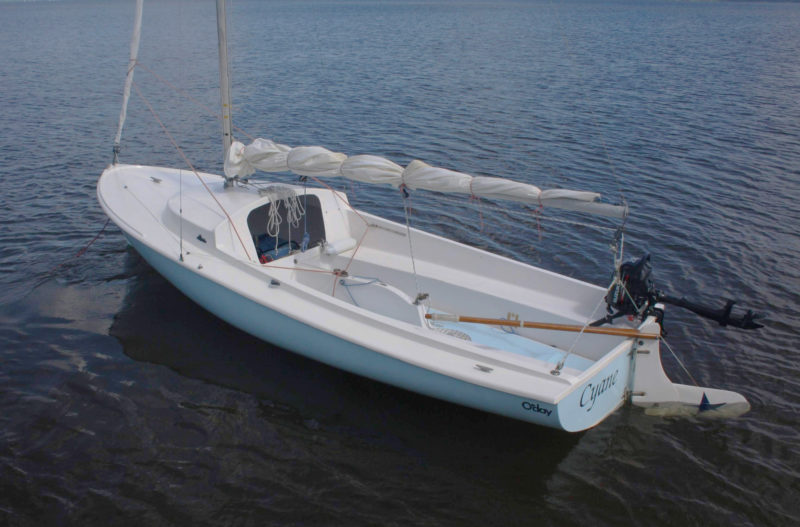
The long side benches in the cockpit provide uncrowded seating for six. The sole is above the waterline and is self-bailing.
The early DS I can be identified by wooden thwarts, seats, and cockpit sole, a centerboard lever, open cuddy, and a transom deck. The DS II came out in 1971 with built-in foam flotation. The cuddy opening is smaller than the opening on the DS I because it also acts as a thwart, and a thinner transom allows mounting a small outboard motor without the need for a bracket. The Day Sailer I and II are considered class legal for one design racing, but the DS III is not considered race-legal due to higher freeboard on the transom, which was a departure from Fox’s hull design. O’Day built the III from 1985 to 1990, so to race in One Design regattas it is important to buy a DS I or DS II. The current Day Sailer in production is a modified version of the DS I with improved self-rescuing capabilities, two sealed air tanks, and a cuddy flotation tank with a smaller hatch.
The Day Sailer, no matter which model, is a very versatile boat, easy to rig, sail, transport, and store. With the mast down the boat and trailer take up just a few feet more than an average family car, so can be stored in most garages, though the mast may need to be stowed diagonally. At the ramp, the Day Sailer can be rigged in under 30 minutes: step the mast, add the boom, bend on the jib and main, clip the pop-up rudder onto the transom, and sort out the sheets.
Stepping the mast is the biggest challenge. The 23′4″-long racing mast is stepped through the top of the cabin onto the maststep fixed to the floor of the cuddy, and that can be tricky for one person. The mast does not weigh much, but it is helpful to have a helper at the foot of the mast to guide it into the cuddy opening. The good news with this arrangement is that once the mast is stepped, it is secure, and there’s no rush to attach the forestay.
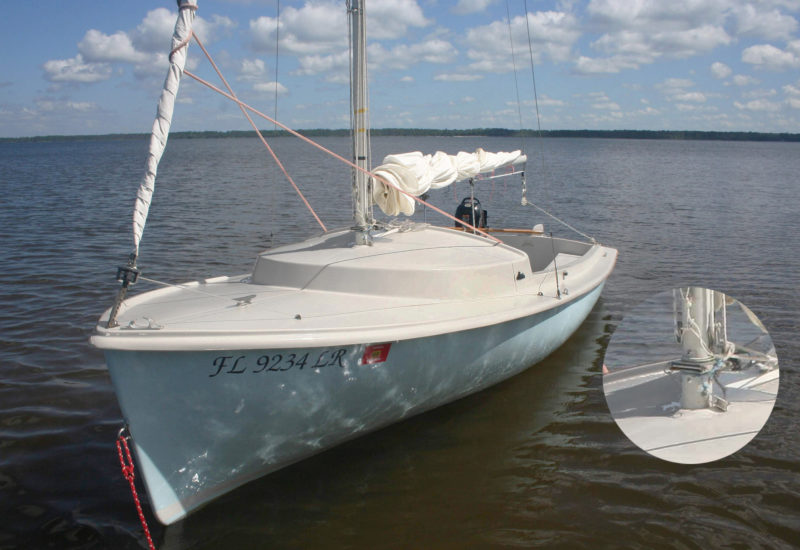
A mast hinge, a popular option, makes raising the mast much easier.
About 75 percent of the new boats are delivered with a hinged mast, eliminating the awkward gymnastics of stabbing the mast through the cuddy. Once the mast is raised and the forward hole on the hinge pinned, securing the forestay to the bow fitting takes the strain off the hinge. Side stays can then be tightened to take out the slack, but no more than hand tight. Stays that are too tight can damage the hull. Tighten the nuts on the turnbuckles and tape over any cotter pins.
There are different sheeting arrangements for the boom. Some boats have sheets attached in the middle of the boom; the sheet on a DS II starts from a traveler on the transom and ends forward on a swivel cam cleat mounted to the centerboard case. The DS II boom also has a spring in the gooseneck that allowed for roller furling— disconnect the sheet, pull the boom aft, and roll the sail onto the boom. A reefing claw has to be added to connect the sheet to the sail-wrapped boom, but this design is not optimum, nor is the wad of rolled-up sail by the boom’s gooseneck. A better arrangement is to add a conventional set of reefpoints to the mainsail. The boom also has a vang to improve sail control.
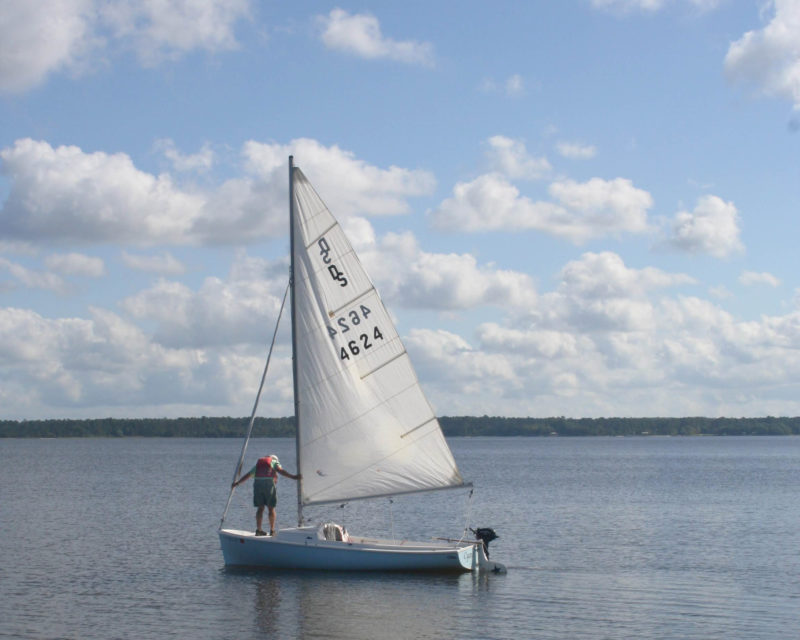
The 6′ 3″ beam gives the Day Sailer good stability, enough to keep the boat under someone standing on the foredeck.
The jib on the racing version of the DS is a standard affair, attached with hanks onto the forestay and raised with a halyard. Some skippers add a downhaul to lower the jib from the cockpit. Both the main and jib halyards are led aft on the top of the cuddy. The recreational version of the new DS I comes with a roller-furling jib, which we consider essential for sailing dinghies, especially if singlehanding. We have added a roller-furling jib to our DS II along with the mast hinge. We also added the hardware and rigging for a spinnaker, halyard, spinnaker pole, spinnaker pole control lines, sheet blocks, and jam cleats.
T he Day Sailer is a treat to sail; it handles well, tacks with ease, and powers up quickly with its large sail area. The planing hull is responsive to the tiller, and the wide beam makes it stable. The boat will roll quickly but then sets on a tack, holding it with stable and positive helm control. The centerboard can be easily adjusted from amidships.
We sail a Drascombe Lugger and a Sunfish; the Lugger drives like the family sedan and the Sunfish like our Mustang. The Day Sailer handling is closer to that of the Sunfish—when the breeze picks up, the mainsheet needs to be held in the hand and someone should be ready on the jibsheets. The jibsheets run through the coaming on the DS I and through small cars on the DS II. For the highest performance, skippers have added tiller extensions and hiking straps. There is an outhaul on the battened main; racing versions have barber-haulers and travelers added. Pop the spinnaker, and it will scoot along quite nicely in a light breeze.
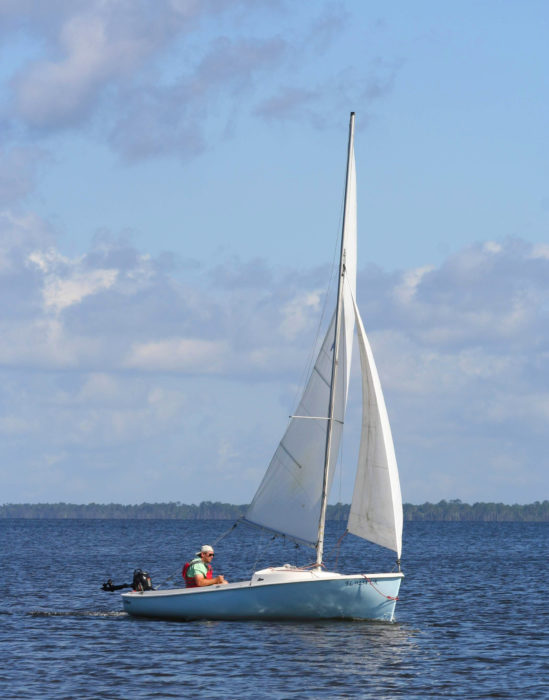
The Day Sailer carries 100 sq ft in the main, 45 sq ft in the jib and, for sailing off the wind, another 95 sq ft in spinnaker.
The Day Sailer’s 7′ 4″-long cockpit provides plenty of room for three adults, or two adults and two kids. With four adults it gets cozy; there is not much moving around, so whoever is sitting next to the tiller or foredeck needs to know what to do. It is easy to depower the main, reef it, or furl the jib as needed.
The cuddy is spacious for storing picnic or camping gear, and it affords a space equivalent to a two-person backpacker tent for sleeping aboard for overnight cruising. Adding a topping lift makes the boom nice ridgepole for a boom tent; there’s plenty of room to sleep in the uncluttered cockpit. The Day Sailer has completed many endurance cruising events, such as the Texas 200, Florida 120, and the Everglades Challenge.
A small kicker can be added for auxiliary power. We have used both an electric trolling motor and gas outboard, with best results coming from a 2-1/2-hp four-stroke that pushed push the boat to 6 knots at one-third throttle. The DS I will require a bracket to support and outboard; the DS II transom is thin and sturdy enough for a direct mount. If we’re not going far from home, we occasionally skip the outboard and carry a paddle; with her low coaming we have paddled her a bit, even backward over the transom.
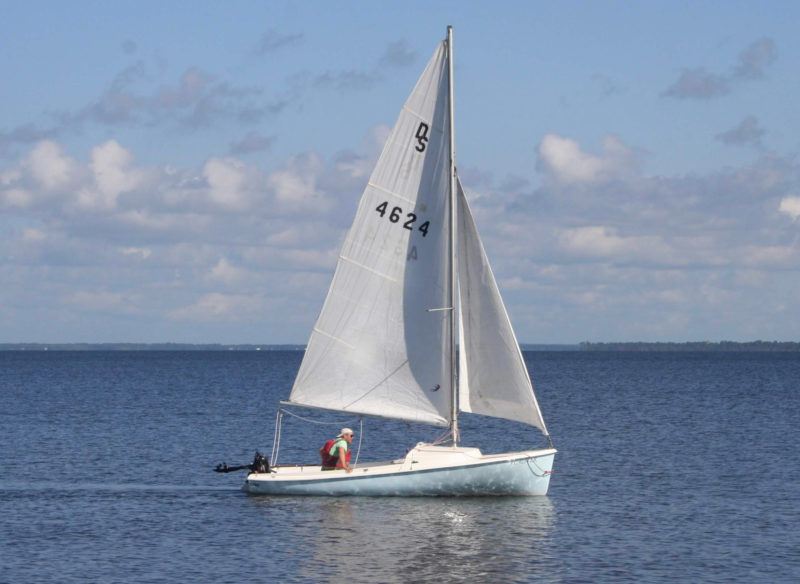
The transom of the Day Sailer II will accommodate an outboard for auxiliary power. The Day Sailer I will require a bracket.
D ay Sailers are easy to find and inexpensive, considering their capabilities. If you come across one, there are few important things to check. Make sure the centerboard moves in the trunk, see that the forestay tang and bow seam are not pulled up, inspect the cuddy deck for noticeable depression which would indicate failure of the maststep under the cuddy floor, and if it is a DS II look inside the flotation compartments. Rinse her off and get her ready to sail. There is a great Day Sailer Association with a web-based forum, and excellent parts availability.
Audrey and Kent Lewis enjoy time with CYANE, along with their small fleet of kayaks, canoe, sailboats, and lapstrake runabout. They blog about their adventures on smallboatrestoration.blogspot.com
Day Sailer Particulars
Length/16′ 9″
Draft, board up/9″
Draft, board down/3′ 9″
Displacement/575 lbs
Main/100 sq ft
Jib/45 sq ft
Spinnaker/96 sq ft
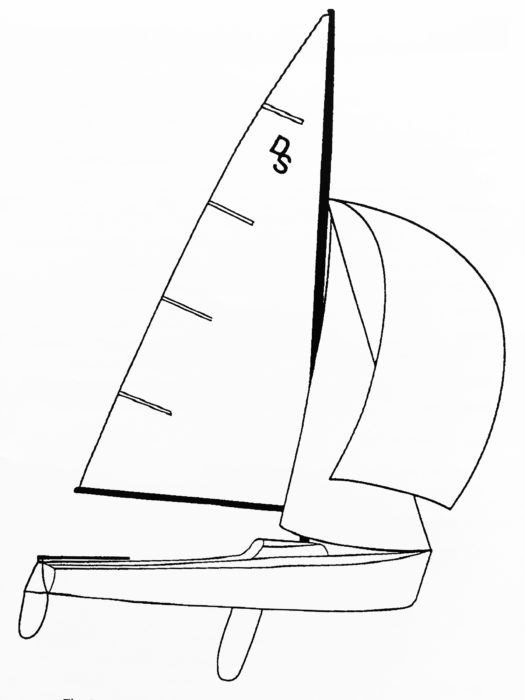
The Day Sailer is built by Cape Cod Shipbuilding Company . Prices start at $18,335 (less sails). For more information about the Day Sailer Class, visit the Day Sailer Association .
Is there a boat you’d like to know more about? Have you built one that you think other Small Boats Monthly readers would enjoy? Please email us!
Share this article
Join The Conversation
We welcome your comments about this article. If you’d like to include a photo or a video with your comment, please email the file or link.
Comments (35)
Great article Kent! I have a sister to your boat, right down to the racing mast and blue hull!! But since we’re moving to the Pacific NW, I’m about to sell it. I’m limiting myself to only 3 boats for the move (and it’s a hard sorting out!!!!). Great write-up about a fantastic boat! Thanks! Charlie
My father was George O’Day. It is nice to know the basic design that my Dad helped create is still vibrant 60 years later. I always find it interesting since Dad was a pure racing sailor that he designed a boat and saw the importance of appealing to the recreational aspect of sailing. He wanted to open the door to the bigger audience to share his passion of sailing.
I sailed with your father on a Hobie 16 at a Red Cross small craft instructor program. So much fun sailing with a legend.
Charlie we know it’s hard, the Day Sailer is such a timeless boat. If she has to change skippers, find her a good one.
Miss Beth, so wonderful to hear from a family member, it must have been quite an adventure to grow up around boating and racing. That Day Sailer hull was Cap’n Jack’s favorite, we enjoyed looking at it. Thank you for the insight into your family’s history.
Cheers, Skipper and Clark
I’ve had an O’Day for years, my first sailboat. I love sailing her around our little lake.
This boat is the best for a small family. In Brazil it’s a great option.
O’Day DS was my first brand-new boat. I was a “veteran”of maybe six months sailing in the late 1960s and she taught me to love sailing.
Great boat design. I’ve sailed different ones on and off over the years. Still a favorite.
Beth, your father made great boats as my father still has an O’Day 20 he bought new in ’76 and it’s still like new and a great sailing boat!
I recently bought a 1966 model after downsizing from a Viking 28. My father owned a Rhodes 19 and we sailed that boat for years on the western end of Lake Ontario. The design was similar, so the transition to the 16 was easy. I love the boat because even in high winds I can make a simple adjustment to the main with reef points. Solo sailing is fun and safe. I can see why so many were sold.
Hello, I just bought O’day sailboat. I do believe from what I’ve been reading that it’s a Daysailer 1. I was told this boat has never been registered and never had a kicker motor on it, I can’t find the metal tag on the transom but I see the two rivet holes where it should have been. Is there any other place on this boat to find the serial number? I would like to put a kicker on it and register it and, if not, is there a way to register this boat? Thank you for helping
The requirements to register a small boat that has not been registered before is different for each state. In NY, a boat is registered through the DMV. HIN numbers are placed on the right side of the transom. If you do not have one your boat was made prior to 1972.
Thank you for the reply, I’m working on getting a HIN number now.
Check with O’Day. Some manufacturers hide a second HIN onboard. Worth a shot.
My boat has a plate on the inside toward the front of the boat. On the bulkhead (might not be the right term) behind the mast. You’ll have to crawl into the cubby to see it. It’s a little plate 2″ x 4″ and shows Hull no. and Class no. The paperwork I have says the boat was made in 1967. Does anyone know the difference between Hull number and Class number?
Can anyone give me today’s value of a 1960 O’Day Day Sailer, #333, with a small motor that goes on the mount with sails that all sit on a Dilly trailer? It has all the original woodwork that my husband redid. It does not have a spinnaker but has the jib and main and a Proctor mast.
My daughter and I are looking for an older (less expensive) sailboat. Not sure where your at , we are South of Boston. The O’Day is our first choice. If you are going sell, please reply to this comment. Thanks
[I’ll connect sellers to John. Ed.]
16′ O’Day Day Sailor with trailer and motor
2013 DS for sale in Sharon,MA. needs work on floatation tanks
At 30 years old, I just bought my first sailboat which is a 1965 DS I. The boat has sat for a few years and she needed a good power-washing plus painting of the hull and inside the cubby and several new lines. I’m completely inexperienced with sailing (plenty of time cleaning boats, though) and couldn’t be happier to learn on such a beautiful vessel. Thanks for this article! It’s great to get some background info. Plus, plenty of words to highlight as I expand my boating vocab.
Day Sailers are easy to find? I guess you know where to look (certainly no offers in Craigslist). I have not been lucky enough to come across a good one that is 10 to 20 years old. I live in Massachusetts. Would you mind sharing where to look for one?
I have an O’Day day sailer 16.5 ‘ up for the taking. Our family had years of good times sailing and camping with It. Great family boat. Wooden seats and rails. Needs some work. In central Massachusetts
I am assuming you have gotten rid of your O’Day day sailer – if not, I may be interested. I’m new to sailing at 57 years young! I just took lessons at KYC here in Blue Hill, ME and am looking for a great starter boat that I can learn in and have fun on the bay.
Thanks, Kelly
Actually, I just bought a 1989 DS2 from Craigslist, on trailer, for $300. It needs only minor work and a lot of cleaning. I hope to float it Saturday to see if it sinks like a rock (I know it has flotation), and will need glass work, but I could see nothing amiss while on the trailer.
So, never say never.
Hi Laranja, I just read your comment about trying to find a used O’Day Day Sailer. I live in Wareham where Cape Cod Shipbuilding is located, they are the current builders of the Day Sailer. They usually have used boats available. I have a 1971 DS, a wonderful boat.
I have a 2013 DS for sale in Sharon,MA. needs work on floatation tanks
Fantastic article
Interested in purchasing a fine example that was actively sailed
I agree with the many positive comments above. Great article! I was a longtime owner of an O’Day Widgeon (14′), and after many boat-less years I’m pleased to have purchased a 1984 O’Day Daysailer II just last week. It’s in good condition, and after sourcing a few needed part, I’ll enjoy it on lakes here in Georgia. Thanks for the great article, which has served as an orientation of sorts for me as to what to expect when I launch her for her maiden voyage under my ownership. A long-time marketing and sales executive, I’m naming her SAILS CALL!
I just got a DaySailer, thought it was a 67 DS1 but the transom is thick with a box on the port side by the transom so not sure now DSII?
I just today bought and brought home to MA a 1966 O’Day Day Sailer (as shown on the registration from NH), and it has a thick transom with lidded box on the port side. Also has a wide cuddly opening and wooden cowling and thwarts as described above for a DSI.
We’re down sizing from a 53′ Pearson to an O’Day 18 that someone offered us. I have no qualms about the sailing, but the temperature of the water here (Massachusetts to Connecticut) worries me very much, after a lifetime in the tropics. Are these dry boats when sailed conservatively?
I have a 2013 Cape Cod built DS for sale in MA. Needs some work on floatation tanks.
I just sold our Venturer 22 and picked up (rescued) an O’Day 16 DS. A couple weeks in the shop and it looks ready to sail. One question: the roller reefed main (boom) does not “lock in.” I suppose I could jiffy reef it but does anyone have experience with the roller reefing boom? Am I missing a part (the claw) or do I just not get it.
I want to buy an O’Day sail 17′
We have a 1976, 17′ foot O’Day DSll (?) on trailer that we are transferring to another family member. We are trying to figure out the best way to get it from Oregon to New Hampshire. Any ideas out there?
Leave a Reply Cancel reply
Your email address will not be published. Required fields are marked *
Stay On Course
More From This Issue

From The Editor
Suitable for Framing
here’s an interesting exhibition of art at the Georgetown Historical Society in Georgetown, Maine. Some of the pieces on display are an unusual pairing of abstract painting and wooden boat...
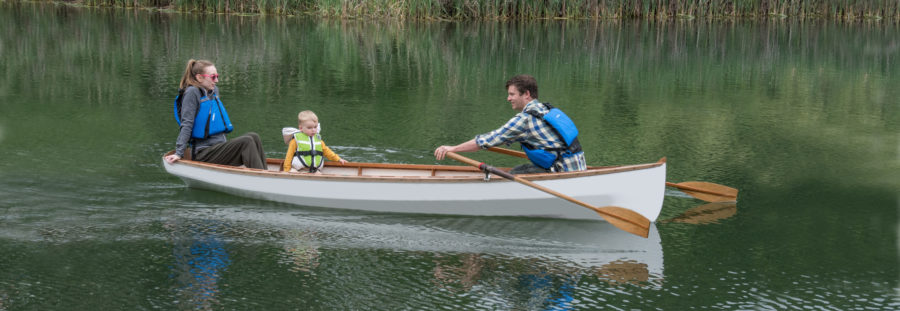
Whitehall Tender
Shenandoah Whitehall
The construction went quickly. Every major project I’ve ever begun has a hidden “gumption trap”—a difficult and unrewarding challenge that sucks the will to persist right out of me. This…

The Day Sailer, no matter which model, is a very versatile boat, easy to rig, sail, transport, and store. With the mast down the boat and trailer take up just…
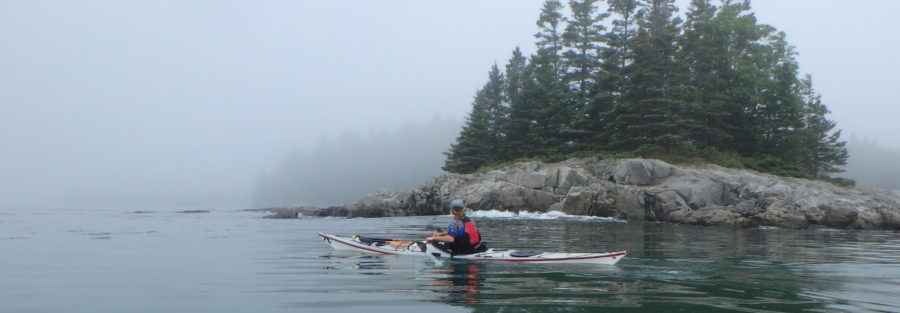
Dallying Downeast
We’d started at Deer Isle, where we had lived and worked for 14 years, and we planned to paddle a big figure-eight: first down to Portland and back, and then…
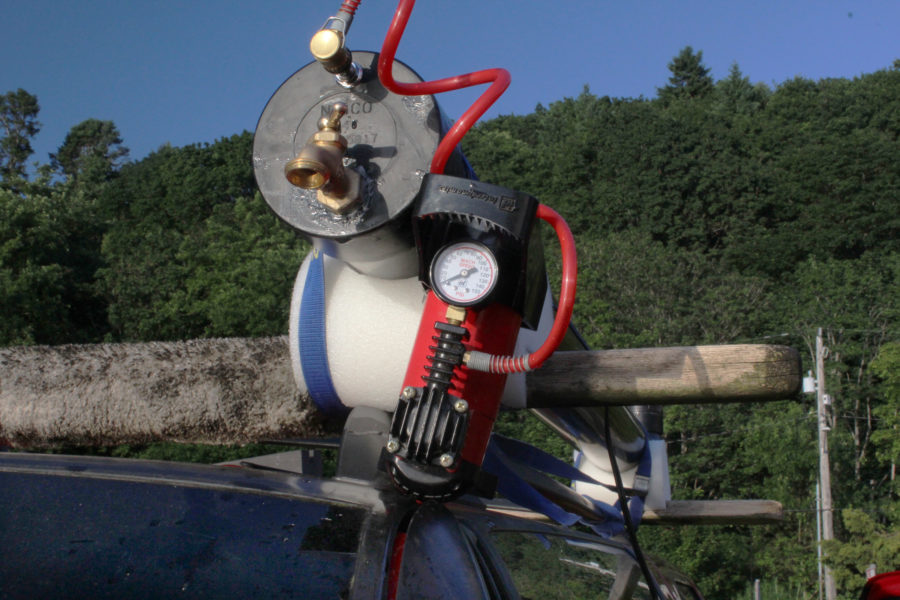
A Cartop Water Tank
Bringing the pressure up to 40 psi is sufficient to propel the remaining 4 gallons of water out of the tank. The nozzle I have on the hose will shoot…
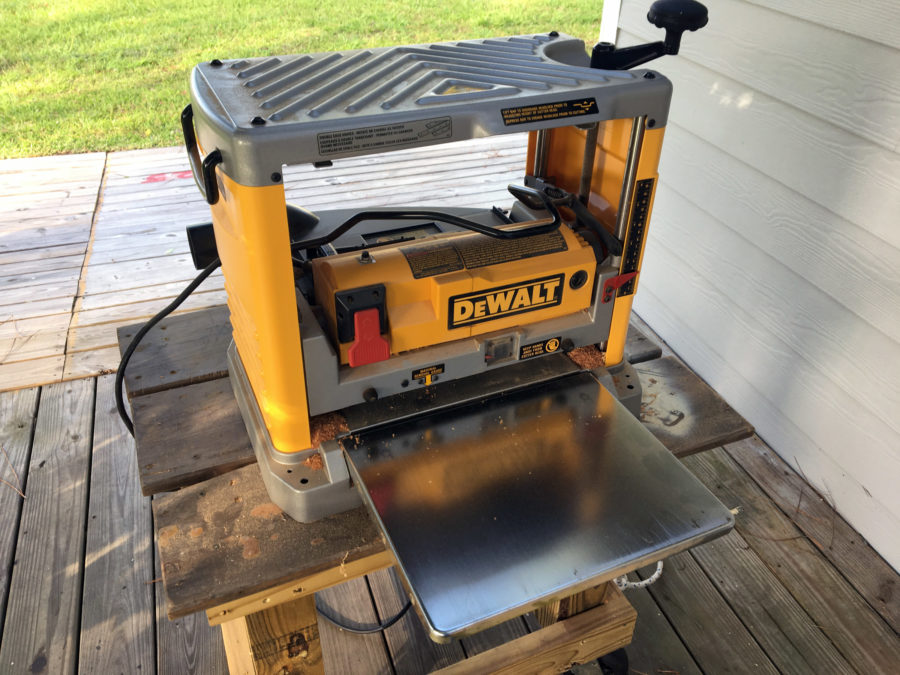
Product Reviews
DeWalt’s Benchtop Planer
We researched benchtop planers and decided the DeWalt DW734 would meet our requirements. Its 12-½” wide bed could handle the 12”-wide garboard that we needed to replace, and its 6”…
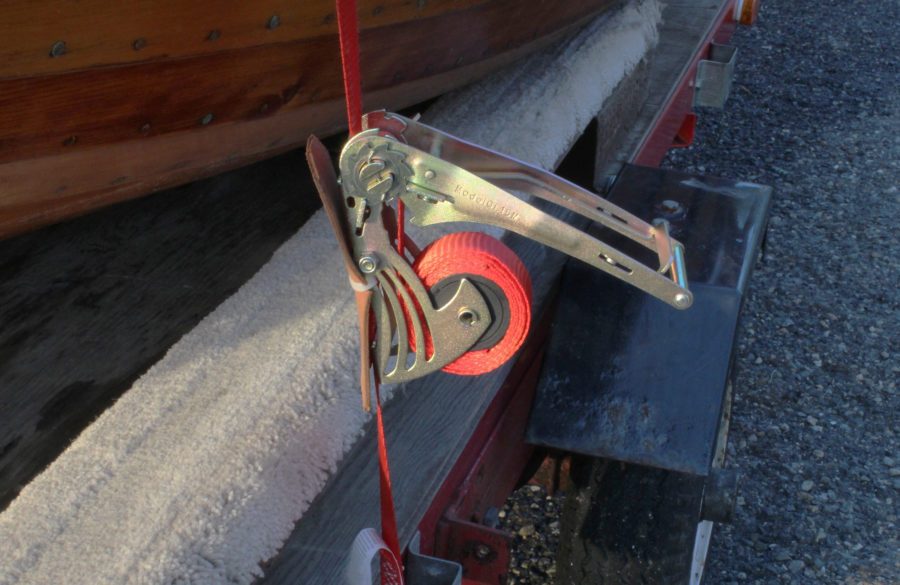
Quickloader Retractable Ratchet Straps
The QL15 model has two black, rubber-coated metal S-hooks, one of which is on a 9-1/2” piece of 1” polyester webbing, and the other is at the end is a…
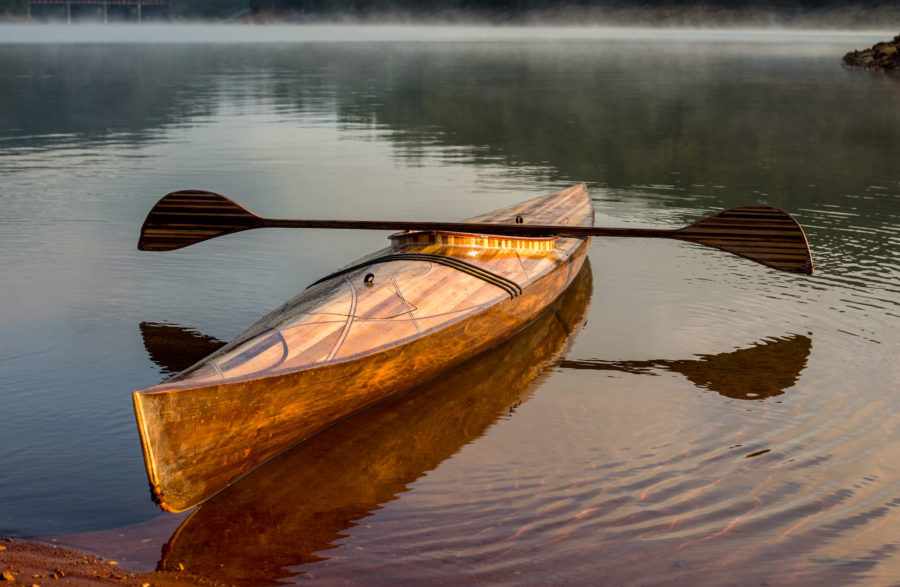
Reader Built Boats
DREAM WEAVER
Neither Claudia nor Jacob came into that class with much experience in marine design beyond scanning online videos and blogs. For guidance on construction they studied Nick Schade’s The Strip-Built…
More Boat Profile
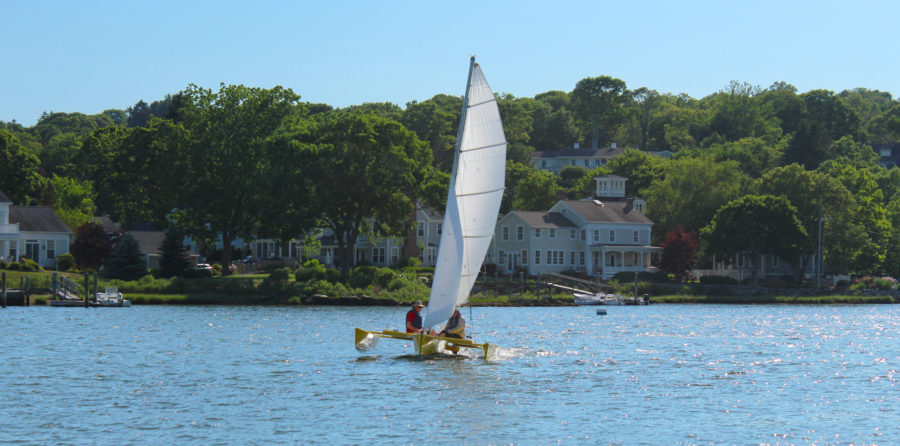
Seaclipper 16
I’ve built more than a few boats for myself in the past 38 years, and in all that time I have never been tempted to build a multihull. Why go to…
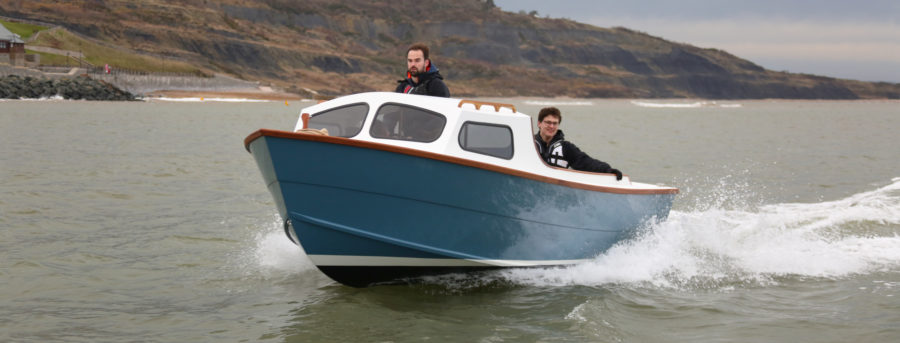
On the day SADIE was launched, the wind was light and there was a slight chop off Lyme Regis. With five of us on board and the engine at 5,000…
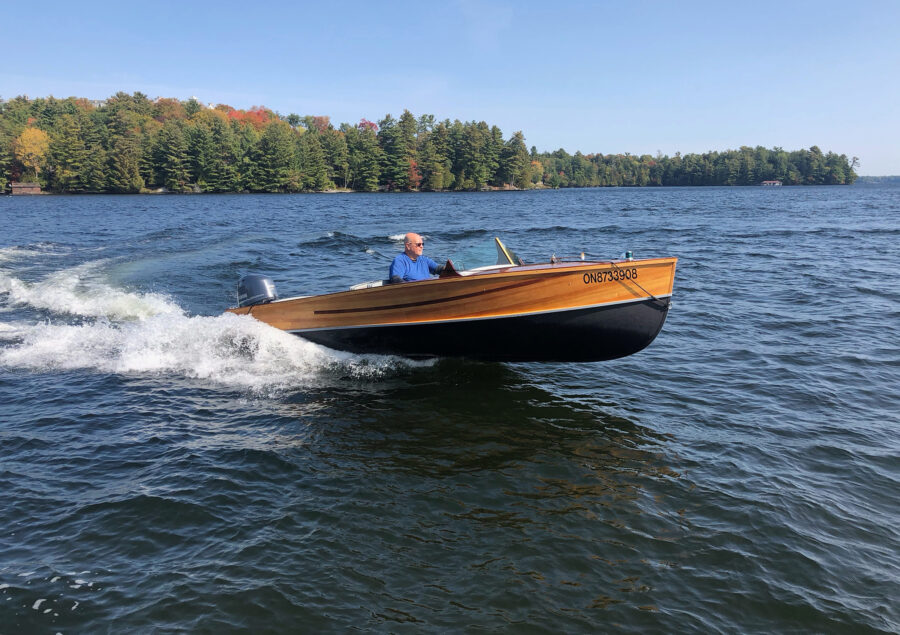
Georgian Bay
We ordered the Georgian Bay, an 18′ cedar-strip cruiser, which would include a 60-hp Yamaha high-thrust four-stroke outboard with electric trim. The base model of the boat, without any of…
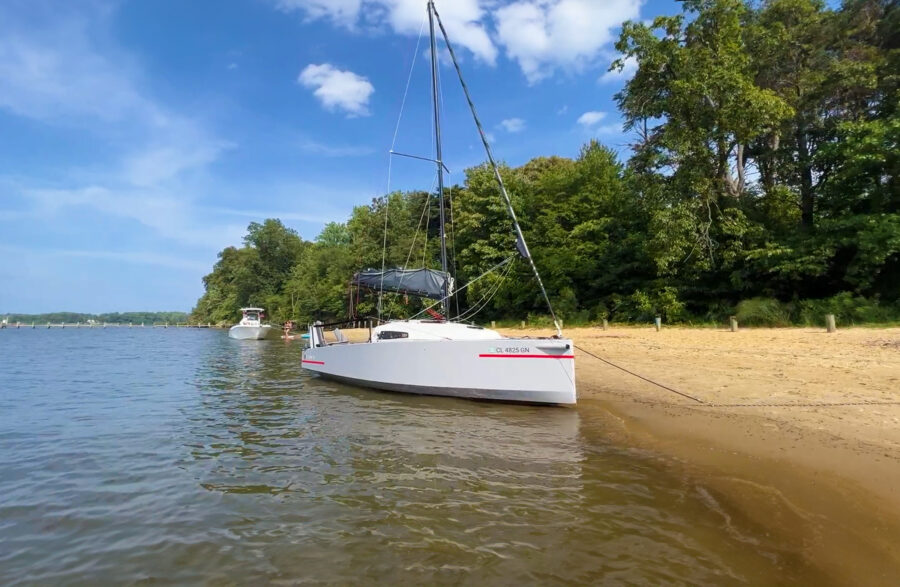
The Flow 19 is a trailerable sport cruiser designed for performance sailing with ample storage and cabin room for comfortable cruising.The lines are pure and racy, and the first few…
Subscribe Today!
Become a subscriber today and you’ll recieve a new issue every month plus unlimited access to our full archive of backlogged issues.
Already a subscriber? Sign In
Subscribe For Full Access
Flipbooks are available to paid subscribers only. Subscribe now or log in for access.
Better Sailing
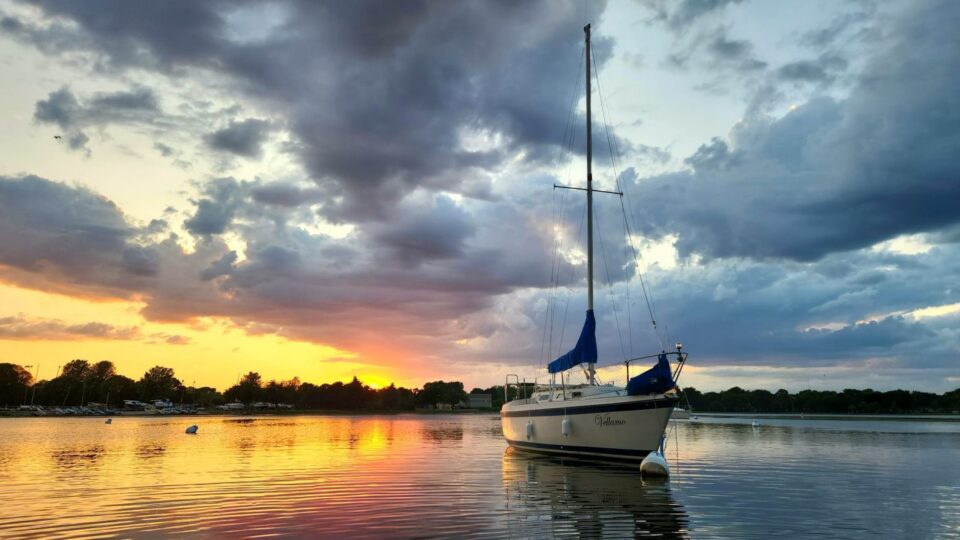
Are O’Day Sailboats Good? A Closer Look at a Classic Brand
For many, sailing is not just a hobby; it’s a passion, a lifestyle. It’s about the rhythm of the waves, the dance of the wind, and the thrill of the voyage. Certain names have made their mark at the heart of this world, and one such name is O’Day. An iconic brand in American sailing, O’Day sailboats have been a staple on the waters for decades. In this comprehensive review, we dissect what makes these boats unique and ask the central question: Are O’Day sailboats worth the hype?
Genesis: The Birth of a Legacy
Understanding O’Day requires a trip back in time. Founded in 1958 by Olympic sailor George O’Day, the brand’s inception was rooted in a clear vision: produce competitive sailboats that were both accessible and user-friendly. This dedication to quality and accessibility would become the hallmark of O’Day.
Stability Meets Performance
O’Day sailboats are often celebrated for their exceptional stability, a boon for both beginners and seasoned sailors. This stability doesn’t come at the expense of performance. Boats like the O’Day 22 and 25 were meticulously designed to ensure a stable voyage, even in challenging conditions. Combined with a carefully crafted hull, their keel configurations allowed for speed, agility, and safety.
Durability: Standing the Test of Time
The world of sailing is replete with tales of O’Day sailboats that have weathered countless storms and still sail proudly. The secret lies in their robust fiberglass construction. These boats have been known to provide decades of reliable service with proper maintenance. Their longevity is not just a testament to the quality of materials but also to O’Day’s craftsmanship and engineering prowess.
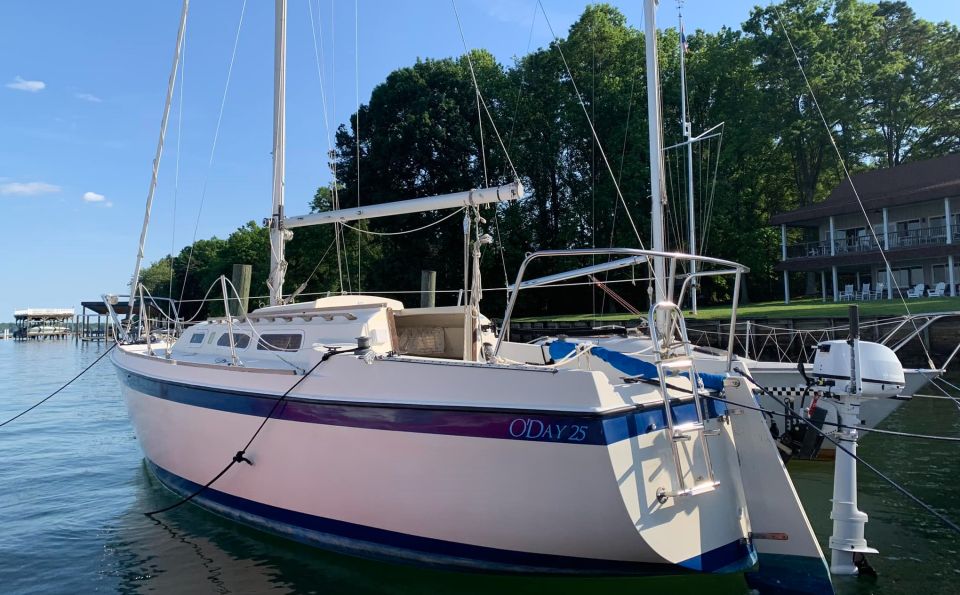
>>Also Read: Best Sailboat Brands
Inside an O’Day: Where Comfort Resides
Beyond the technical aspects, the interiors of O’Day sailboats speak of a dedication to comfort. Practical design ensures maximum space utilization. Ample headroom, cozy berths, and generous storage make them perfect for extended trips. While they might not compete with luxury yachts, the interiors have a charm that exudes warmth and coziness, making every journey memorable.
Value Proposition: Quality at the Right Price
George O’Day’s vision was not just about crafting exceptional sailboats but also about making them accessible. Throughout its history, O’Day’s pricing has reflected this commitment to value. Their boats, especially when compared to some competitors, often came with an appealing price tag. This accessibility has opened the world of sailing to many who might have found other brands prohibitive.
A Thriving Community
Brands that stand the test of time often foster strong communities, and O’Day is a shining example. Owners share a bond forged in the waters and reinforced at marinas, clubs, and online forums. This camaraderie is invaluable for new owners, providing a platform for shared experiences, maintenance tips, and even sailing adventures.
Moreover, the widespread popularity means that service, repairs, and spare parts are easier to find. Even decades after their prime, O’Day sailboats find support, love, and care from a dedicated community.
Limitations: Every Coin Has Two Sides
No review is complete without addressing potential drawbacks. Despite their many strengths, O’Day sailboats may not satiate every sailor’s needs. Some sailors looking for ultra-modern aerodynamics and speed might find them a tad underwhelming. Moreover, given their age, older models can demand significant investment in upgrades or overhauls to align with contemporary standards. However, many purists argue that this is a small price for owning a piece of American sailing history.
Are O’Day Sailboats Good? – The Verdict
O’Day sailboats have firmly anchored themselves in the chronicles of American sailing history. Their emphasis on stability, performance, and affordability made them a favorite among recreational sailors. And while they might not be the epitome of luxury or racing prowess, they undoubtedly offer a balance of quality and value.
O’Day sailboats are more than just vessels; they are narratives, stories of a brand that made sailing an attainable dream for many. Their boats aren’t just machines; they are companions on countless adventures, silent witnesses to the joys, challenges, and thrills of the open waters.
So, are O’Day sailboats good? The answer is nuanced. O’Day might not top your list if you seek modern, high-tech marvels. But if you’re looking for reliable, durable, and historically rich sailboats that offer a blend of performance and value, O’Day stands tall.
In the grand sailing arena, O’Day sailboats have etched their legacy, not just in fiberglass and sailcloth but in the hearts and memories of countless sailors. They represent a chapter in American sailing that speaks of innovation, dedication, and an undying love for the sea. Owning an O’Day is not just about possessing a boat; it’s about holding a fragment of history, a testament to the timeless allure of sailing.
Peter is the editor of Better Sailing. He has sailed for countless hours and has maintained his own boats and sailboats for years. After years of trial and error, he decided to start this website to share the knowledge.
Related Posts

The Ultimate Guide to Choosing the Best Fishing Line for Trolling

Lagoon Catamaran Review: Are Lagoon Catamarans Good?

Best Inboard Boat Engine Brands

Maximizing Comfort on Your Boat: Essential Supplies and Amenities
- Buyer's Guide
- Destinations
- Maintenance
- Sailing Info
Hit enter to search or ESC to close.
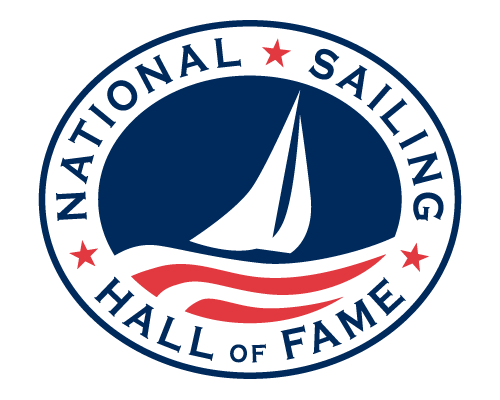
All Inductees > Class of 2014
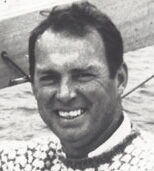
George Dyer O’Day
May 19, 1923 - July 26, 1987
Brookline, Massachusetts
Boats for the People
April 24, 2002 feature on George O’Day in Sailing World
New York Times obituary for George O’Day
Wikipedia page for George O’Day
Wikipedia page for O’Day Corporation
Dolphin 24 class tribute to O’Day Corporation
Dophin 24 class tribute to George O’Day – includes a 1960 advertisement for O’Day sailboats
“George O’Day: The Man Who Loved to Sail” – article in May/June 2002
List of sailboats designed & built by George O’Day on SailboatData.com

Preserving America’s Sailing Legacy
Engaging Sailing’s Next Generation
Stay Connected to the National Sailing Hall of Fame
Logo and History Needed. Please contact us to edit or contribute to this page.
George O'Day Associates, Inc.
Boston, Massachusetts
George O'Day, a famous racing sailor, formed O'Day Associates to sell boats made by other manufacturers. In 1958, the corporation began designing and manufacturing boats. O'Day sold a few models made by Fairey Marine such as the Finn, Atlanta, Jolly, Firefly, Cadet, and 505. By 1960, it had purchased Marscot Plastics of Fall River, formerly of New Bedford. See the link below for additional history:
Additional History
In 1958, Ray Hunt, a noted sailboat designer, drew up the 22 ft 8 in. V-hull inboard "Hunter" model for O'Day Associates. (For more information and an image, see Sports Illustrated, January 26, 1959). This may have been the design leading to the Hunter 19 outboard tested by Mercury in 1959.
A 23' fiberglass Hunt model powered by 2- 80 HP Volvo Aquamatics participated in the 1960 Miami-Nassau race , piloted by James R. Wynne. The boat was called the Aqua Hunter and finished second behind Richard Bertram's Moppie.
1958 Information

1958 O'Day Sailboats Article

1958 O'Day Pixie Article
1959 Information

1959 O'Day Boats Ad, p1

1959 O'Day Boats Ad, p2
1959 O'Day Boats Article

1959 Marscot and Ray Hunt Join O'Day Ad

1959 Hunter 19 Mercury Mark 58AEL Test
O'Day Boats in Use
Back to Main Page
- Massachusetts
Navigation menu
Personal tools.
- View source
- View history
- Community portal
- Current events
- Recent changes
- Random page
- FiberGlassics Home
- PayPal Donation
- What links here
- Related changes
- Special pages
- Printable version
- Permanent link
- Page information
- This page was last modified on 9 January 2016, at 19:17.
- Privacy policy
- About Classic Boat Library
- Disclaimers
- BOAT OF THE YEAR
- Newsletters
- Sailboat Reviews
- Boating Safety
- Sailing Totem
- Charter Resources
- Destinations
- Galley Recipes
- Living Aboard
- Sails and Rigging
- Maintenance

Classic Plastic: O’Day 27
- By Jim Carrier
- Updated: January 7, 2021
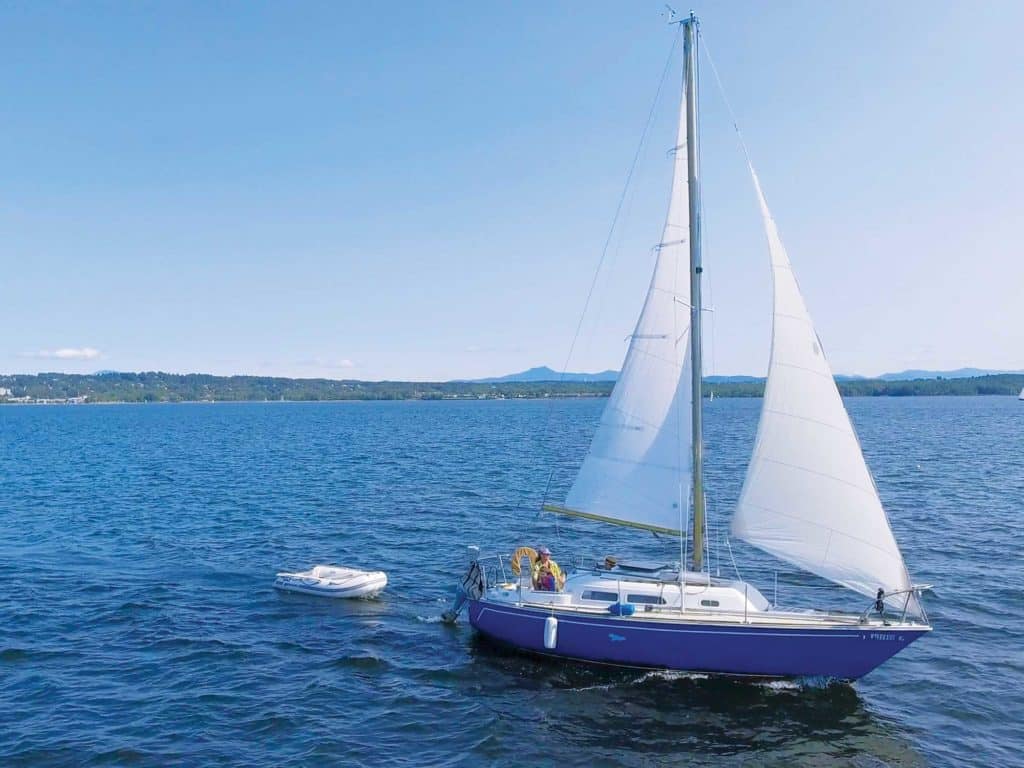
There was a day, before wide screens, all-night buffets and king-size beds, when a family would cruise happily on a boat like the O’Day 27. Solid and simple, the little sloop was just right for lake, harbor or coastal exploring. Small enough for a quick daysail with friends, big enough for a weekend or week gunkholing, the 27 was hugely popular: Between 1972 and 1979, 720 boats were produced at O’Day’s factory in Fall River, Massachusetts.
George O’Day, who founded the company in 1951, wasn’t a cruiser (he won a gold medal at the 1960 Olympics in the 5.5 meter class), but he understood that an uncomplicated sailboat was something a whole family could enjoy.
Alan Gurney designed it. Famous in the high-end yachting world for Windward Passage and other one-off race boats for millionaires, Gurney is said to have worked with what sailing writer Ted Jones called “a seaman’s eye; he thought like the water through which he had sailed.” Commissioned to create an everyman’s sailboat, Gurney sketched a compact, almost blocky hull with a 22-foot-9-inch waterline and 4-foot draft. Half of its 5,000-pound displacement was in the lead keel, which balanced a mast 38 feet above the water, 320-square feet of sail, and the heft to carry a chute or big genoa. The hull was solid, hand-laid fiberglass, with teak brightwork to dress it up. It came equipped with outboard motors or, later, an inboard gas or diesel engine.
Step aboard, as I did on Jonathan Heller’s 1974 O’Day 27, moored on Lake Champlain in Burlington, Vermont, and you will first find a long cockpit with a tiller, an ample entryway and an interior that is surprisingly spacious, due in part to its 9-foot beam, with a fold-up table, stepped mast and 6-plus-foot headroom. According to Jones, writing in Professional Boatbuilder , an O’Day salesman complained about headroom in Gurney’s initial design. Gurney handed him a pencil and “asked him to draw where he thought the headroom should be.” If the cabin “appears to be a bit high,” Jones wrote, “that’s the reason!”
O’Day’s sales brochures for its first keel boat were hyperbolic: a “luxurious cruiser,” “big, airy sleeping accommodations for five,” “a truly superior yacht.” But at a sail-away price of under $7,000, the first O’Day 27s were an instant hit. By the end of their run, they cost $14,500.
By today’s standards, the boat’s galley and head remind me of a small camping trailer—adequate but tight. There’s an icebox, an alcohol stove and an optional shower (if you watch your elbows). One striking compromise is the absence of any anchor hardware. A bow pulpit was standard but nothing on which to hang a hook. Over the years, owners have also had to deal with water intrusion on chainplates.
The good news is that these boats can be had for a song, from $3,900 to $8,000, and that many parts are still available. Heller, a handyman, musician and father of a 3-year-old girl, purchased the boat for $7,000 from a college student who had been living on the hook. Still learning how to sail his yet-unnamed love, he plans to explore Champlain, a cruising ground “big enough to be challenging but not big enough to be scary.” The same could be said of the O’Day 27.
Journalist and author Jim Carrier is a CW contributing editor.
- More: classic plastic , o'day , print dec 2020 , Sailboats
- More Sailboats
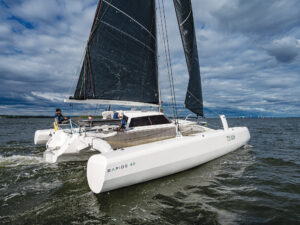
Sailboat Review: Rapido 40
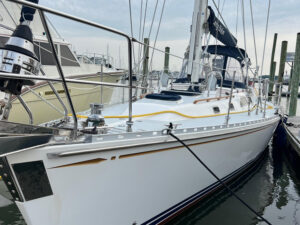
For Sale: 2002 Hylas 46
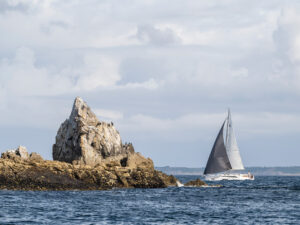
Sailboat Review: Beneteau Oceanis 37.1
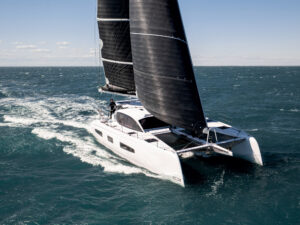
Sailboat Preview: Outremer 52
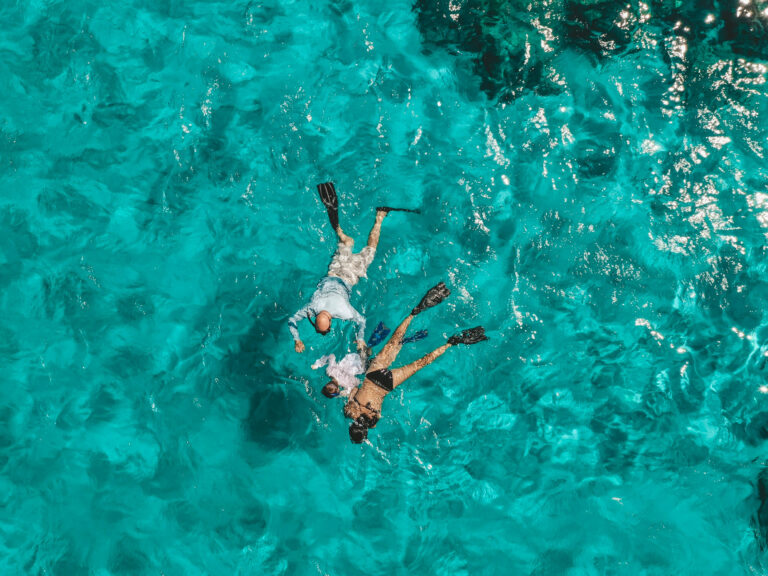
10 Gems of the BVI
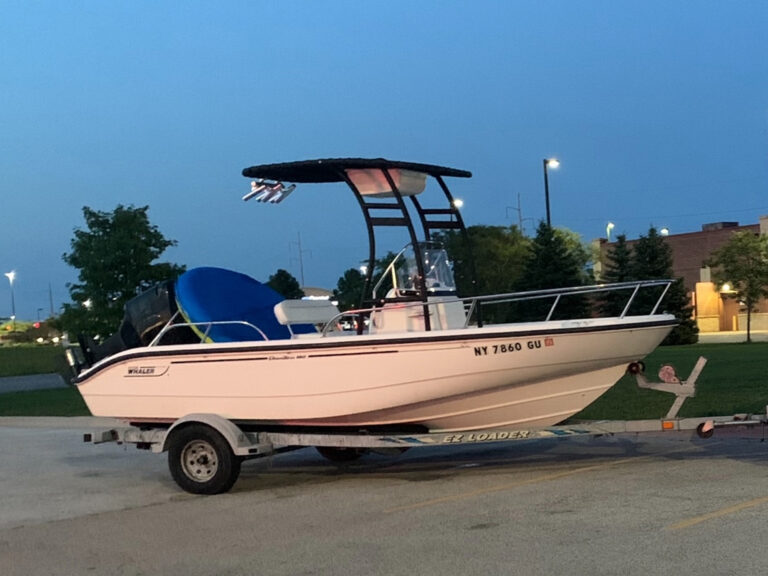
For Sale: A Freshwater Find
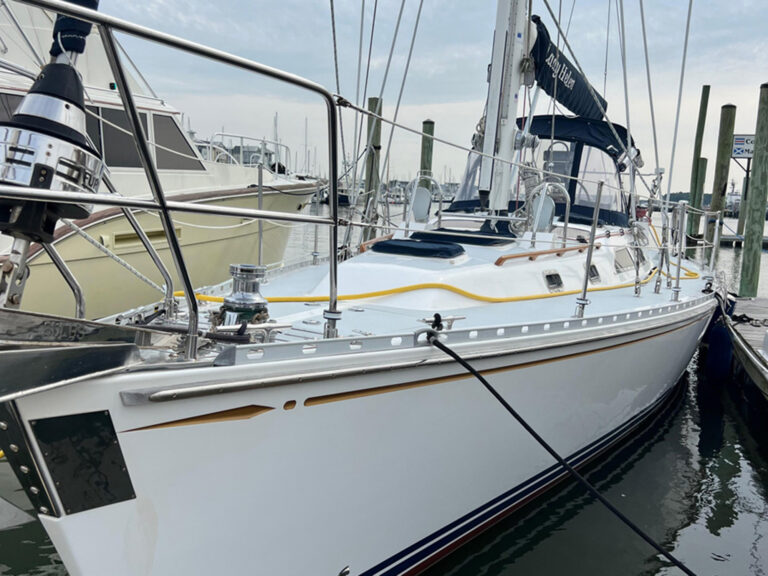
7 Boating Safety Tips for Summer Cruising
- Digital Edition
- Customer Service
- Privacy Policy
- Email Newsletters
- Cruising World
- Sailing World
- Salt Water Sportsman
- Sport Fishing
- Wakeboarding
Great choice! Your favorites are temporarily saved for this session. Sign in to save them permanently, access them on any device, and receive relevant alerts.
- Sailboat Guide
O'Day 322
O'Day 322 is a 32 ′ 1 ″ / 9.8 m monohull sailboat designed by Raymond Hunt (C.R. Hunt & Assoc.) and built by Bangor Punta Corp. and O'Day Corp. between 1986 and 1989.

- 2 / 18 South Portland, ME, US 1987 O'Day 322 $21,500 USD View
- 3 / 18 Perry, MO, US 1989 O'Day 322 $40,000 USD View
- 4 / 18 South Portland, ME, US 1987 O'Day 322 $21,500 USD View
- 5 / 18 Perry, MO, US 1989 O'Day 322 $40,000 USD View
- 6 / 18 South Portland, ME, US 1987 O'Day 322 $21,500 USD View
- 7 / 18 Perry, MO, US 1989 O'Day 322 $40,000 USD View
- 8 / 18 South Portland, ME, US 1987 O'Day 322 $21,500 USD View
- 9 / 18 Perry, MO, US 1989 O'Day 322 $40,000 USD View
- 10 / 18 South Portland, ME, US 1987 O'Day 322 $21,500 USD View
- 11 / 18 Perry, MO, US 1989 O'Day 322 $40,000 USD View
- 12 / 18 South Portland, ME, US 1987 O'Day 322 $21,500 USD View
- 13 / 18 Perry, MO, US 1989 O'Day 322 $40,000 USD View
- 14 / 18 South Portland, ME, US 1987 O'Day 322 $21,500 USD View
- 15 / 18 South Portland, ME, US 1987 O'Day 322 $21,500 USD View
- 16 / 18 South Portland, ME, US 1987 O'Day 322 $21,500 USD View
- 17 / 18 South Portland, ME, US 1987 O'Day 322 $21,500 USD View
- 18 / 18 South Portland, ME, US 1987 O'Day 322 $21,500 USD View

Rig and Sails
Auxilary power, accomodations, calculations.
The theoretical maximum speed that a displacement hull can move efficiently through the water is determined by it's waterline length and displacement. It may be unable to reach this speed if the boat is underpowered or heavily loaded, though it may exceed this speed given enough power. Read more.
Classic hull speed formula:
Hull Speed = 1.34 x √LWL
Max Speed/Length ratio = 8.26 ÷ Displacement/Length ratio .311 Hull Speed = Max Speed/Length ratio x √LWL
Sail Area / Displacement Ratio
A measure of the power of the sails relative to the weight of the boat. The higher the number, the higher the performance, but the harder the boat will be to handle. This ratio is a "non-dimensional" value that facilitates comparisons between boats of different types and sizes. Read more.
SA/D = SA ÷ (D ÷ 64) 2/3
- SA : Sail area in square feet, derived by adding the mainsail area to 100% of the foretriangle area (the lateral area above the deck between the mast and the forestay).
- D : Displacement in pounds.
Ballast / Displacement Ratio
A measure of the stability of a boat's hull that suggests how well a monohull will stand up to its sails. The ballast displacement ratio indicates how much of the weight of a boat is placed for maximum stability against capsizing and is an indicator of stiffness and resistance to capsize.
Ballast / Displacement * 100
Displacement / Length Ratio
A measure of the weight of the boat relative to it's length at the waterline. The higher a boat’s D/L ratio, the more easily it will carry a load and the more comfortable its motion will be. The lower a boat's ratio is, the less power it takes to drive the boat to its nominal hull speed or beyond. Read more.
D/L = (D ÷ 2240) ÷ (0.01 x LWL)³
- D: Displacement of the boat in pounds.
- LWL: Waterline length in feet
Comfort Ratio
This ratio assess how quickly and abruptly a boat’s hull reacts to waves in a significant seaway, these being the elements of a boat’s motion most likely to cause seasickness. Read more.
Comfort ratio = D ÷ (.65 x (.7 LWL + .3 LOA) x Beam 1.33 )
- D: Displacement of the boat in pounds
- LOA: Length overall in feet
- Beam: Width of boat at the widest point in feet
Capsize Screening Formula
This formula attempts to indicate whether a given boat might be too wide and light to readily right itself after being overturned in extreme conditions. Read more.
CSV = Beam ÷ ³√(D / 64)
Wing (Hydrokeel) or standard keel. These later models, the O’DAY 240, 280, 302, and 322, featured a more European styling.
Embed this page on your own website by copying and pasting this code.

- About Sailboat Guide
©2024 Sea Time Tech, LLC
This site is protected by reCAPTCHA and the Google Privacy Policy and Terms of Service apply.
- New Sailboats
- Sailboats 21-30ft
- Sailboats 31-35ft
- Sailboats 36-40ft
- Sailboats Over 40ft
- Sailboats Under 21feet
- used_sailboats
- Apps and Computer Programs
- Communications
- Fishfinders
- Handheld Electronics
- Plotters MFDS Rradar
- Wind, Speed & Depth Instruments
- Anchoring Mooring
- Running Rigging
- Sails Canvas
- Standing Rigging
- Diesel Engines
- Off Grid Energy
- Cleaning Waxing
- DIY Projects
- Repair, Tools & Materials
- Spare Parts
- Tools & Gadgets
- Cabin Comfort
- Ventilation
- Footwear Apparel
- Foul Weather Gear
- Mailport & PS Advisor
- Inside Practical Sailor Blog
- Activate My Web Access
- Reset Password
- Customer Service

- Free Newsletter

How to Perform Your Own Pre-Buy Inspection

Beneteau 323 Used Boat Review
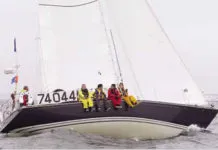
C&C 40 Used Boat Review
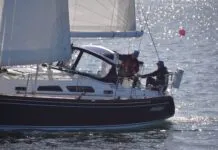
Sabre 386 Used Boat Review

How Does the Gulf Stream Influence our Weather?

Can You Run a Marine Air-Conditioner on Battery Power?

Preparing Yourself for Solo Sailing

Your New Feature-Packed VHF Radio

Practical Sailor Classic: The Load on Your Rode

Anchor Rodes for Smaller Sailboats

Ground Tackle Inspection Tips

Shoe Goo II Excels for Quick Sail Repairs

What Oil Analysis Reveals About Your Engine

An Unusual Sailboat Shines a Light On A Sustainable Future

Is It Time to Get an Electric Dinghy Motor?

Bottom Paint 30-Month Update

Battle of the Teak Cleaners — Snappy Teak-Nu vs. Star Brite

New Seacocks for the Offshore Sailor

Bottom Paint Care

Are E-bikes Worth the Extra Weight and Cost?

How to Handle the Head

How to Select Crew for a Passage or Delivery

Preparing A Boat to Sail Solo

Re-sealing the Seams on Waterproof Fabrics

Waxing and Polishing Your Boat

Reducing Engine Room Noise

Tricks and Tips to Forming Do-it-yourself Rigging Terminals

Marine Toilet Maintenance Tips

Learning to Live with Plastic Boat Bits
- Sailboat Reviews
O’Day 22
A nice cockpit, a touch of privacy and good looks, but performance is not a strong suit here..
O’Day Boats was around a long time by fiberglass boatbuilding standards—about 30 years. Originally O’Day was a leader in small boats typified by the Fox-designed Day Sailer.
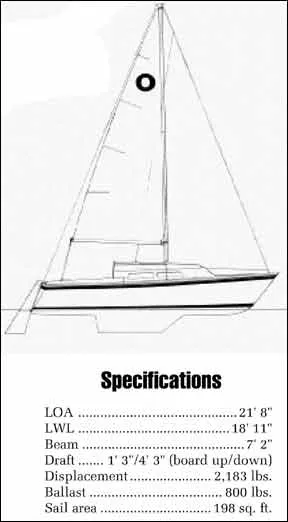
By the early ’70s O’Day had moved into the trailerable cruising boat market. In the meantime the firm was acquired by Bangor Punta along with such other major boat builders as Cal and Ranger Yachts. In later years, with the decline in volume sales of small boats, O’Day had problems. To help alleviate these, O’Day produced larger and larger boats, first a 30, then a 32, and more recently a 34 and a 37.
All the cruising size boats in the O’Day line were designed by C. Raymond Hunt Associates in one of the most enduring designer-builder relationships in the industry (rivaled, in fact, only by Bill Lapworth’s tenure as Cal’s house designer and Bruce King’s with Ericson Yachts). The result of the relationship is a family resemblance in the O’Day line that is more than superficial. What proves popular in one boat is apt to be adopted in subsequent kin. Therefore, any study of the O’Day offerings over the years reflects a process of evolution.
When it was introduced, the O’Day 22 was touted as a competitive contender on the race course, a contrasting companion to the rather hazy 23-footer which it would soon phase out. The 22 had a masthead rig, a stylish rake to the transom, shallow (23″) draft with a short stub keel and no centerboard, light weight (advertised 1,800 lbs) for trailering, and a price under $3,000.
Later, the 22 acquired a fractional rig, a centerboard, 300 advertised pounds and a price tag almost $7,000 higher.
Construction
O’Day once set a standard for small boat construction and styling. That was before on and off labor problems in its plant, management changes under Bangor Punta, the decline in sales of boats in its size range, and increasingly fierce competition for buyers who became more cost than quality conscious. The later O’Day 22s were, frankly, a mixed bag of quality and shabbiness.
The spars, rigging, and hardware are as high quality as we have seen in comparable boats. Our only reservation is with the stamped stainless steel hinged mast step that we know from personal experience requires a steady hand and boat when raising or lowering a mast.
We also think that a mainsheet which terminates in a cam action cleat 16″ up the single backstay may be economical and simple but it is neither efficient nor handy, again a reflection of scrimping to keep price low.
The quality of O’Day fiberglass laminates was historically high but there have been reader reports of gelcoat voids and there is consistent evidence of print through (pattern of laminate in gelcoat). Exterior styling and proportions are superb, an opinion iterated by owners who have returned the PS Boat Owners’ Questionnaires. The O’Day 22, despite her age, is still not outdated.
On a boat of this size and price, a minimum of exterior trim is understandable. What is less understandable is the poor quality of the interior finish and decor. Belowdecks the O’Day 22 epitomizes the pejorative label Clorox bottle , used to describe fiberglass boats. Sloppily fitted bits of teak trim are matched against teak-printed Formica, at best a tacky combination. Cabinetry, such as there is, is flimsy, and in general the whole impression is of lackluster attention to details.
Performance
Without a centerboard the O’Day 22 simply did not have the performance to go with her racy image. Even with the centerboard she is hardly a ball of fire under sail. She does not point well; tacking through 100 degrees is not uncommon and she is tender, with a disconcerting desire to round up when a puff hits. In light air, with her 3/4 fore triangle and working jib she is under-canvassed and sluggish. In such conditions a genoa with substantial overlap is essential.
Since changing jibs is at best a dicey exercise on a 22 footer, the first step in reducing sail is to reef the mainsail. Jiffy reefing is standard and owners of the O’Day should have a system in good working order and know how to use it. Owners of the boat in waters where squalls are a threat may also want to consider roller furling for the larger jib, trading off the loss of performance and added cost for such a rig for the convenience and, in the case of this boat, the safety.
The O’Day is most hurt in light air downwind and most owners will want either an 8′-or-so whisker pole for winging the jib, or a spinnaker. It is a fun boat on which to learn spinnaker handling. With her fractional rig the spinnaker is relatively small and yet the boat is big enough to provide a foredeck platform for setting the sail.

The trouble is that the O’Day 22 scrimps on the hardware needed for ease of handling with or without a spinnaker. The two #10 Barient sheet winches are, in our opinion, inadequate for anything larger than a working jib and we suggest replacing them with optional #16s. Similarly, the working jib sheets lead to fixed blocks whereas lengths of track with adjustable blocks (fitted to some boats as an option) are far better for optimizing sail trim.
The O’Day did not come with halyard winches as standard. It is a large boat for setting and reefing sails with hand tension alone. Most owners will want at least one small winch (#10) on the cabin roof, with the jib and main halyards led aft through jam cleats or stoppers to the winch.
The fairing of the O’Day 22 underwater is better than average, helped by the fact that the lead ballast is encapsulated in the fiberglass hull molding. The centerboard will, however, be difficult to maintain.
Like many other boats of her size on the market, the O’Day 22 is basically a daysailer with incidental overnight accommodations, notwithstanding that her builder (or its ad agency) made much of its questionable comfort, privacy, and space.
The cockpit of the O’Day is almost perfect: a spacious 6-1/2′ long, the seats are spaced to allow bracing of feet on the one opposite, and the coaming provides a feeling of security and serves as a comfortable arm rest. It is also self-bailing although the low sill at the companionway means that the lower hatch board must be in place to prevent water going below in the event of a knockdown.
Seat locker space is excellent for a boat of this size with quarterberth below and we like the separate sealed well for the outboard remote gas tank (but not the fact that the hose can be pinched in use).
O’Day literature boasts berths for two couples in “absolute privacy.” Privacy in a 22 footer has to be one of the more relative features. A sliding door encloses the forward cabin and another, the head.
The layout of the O’Day 22 is a noteworthy example of the tradeoff between an enclosed head and berth space. It does indeed have a head area that can be enclosed, a rare feature indeed on a boat of this size. With a conventional marine toilet and throughhull discharge where permitted, this would be a most serviceable facility.
The tradeoff is a pair of terrible vee berths forward. Coming to a point at the forward end, there is simply not enough room for two adults on even the most intimate terms. They are thus suitable only for a pair of small children who do not suffer from sibling rivalry.
By contrast the two settee berths in the main cabin are a bit narrow but a fit place for two adults to sleep. In contrast to the dinette layout of other boats, we think the more traditional layout of the O’Day would be the choice for most owners, especially those cruising with children. However, the settees are not comfortable to sit on, lacking as they do backrests.
The initial version of the O’Day had the then fashionable dinette arrangement but this was quickly replaced by a pair of opposing settees. We doubt if many owners would bother setting up the portable cabin table between the berths, as it prevents the fore and aft passage through the cabin.
The galley with its small sink and space for a twoburner stove is rudimentary but adequate for a boat of this size, Inadequate is the bin/hanging locker opposite the head. Its usefulness escapes us. Enclosed, it could have been better used space. But then the O’Day 22 desperately needs stowage space.
Conclusions
At a minimum trailering weight of 2,200 lbs. (more realistically 2,500 plus the trailer), the O’Day 22 is above the maximum for trailering without a heavy car and special gear.
If she isn’t going to be trailered and launched off a ramp, the 2′ minimum draft is an unwarranted sacrifice of performance and stability. We would look for a fin keel boat unless shoal draft is the highest priority.
On the other hand, with some additional sails and hardware the O’Day 22 should appeal to the sailor who wants a minimum size (and therefore price) boat primarily for daysailing and occasional weekend cruising (maximum one couple plus two young children).
Clearly the O’Day 22 is a minimum boat built tightly to a price. She is attractively styled. As she is apt to be a first boat, resale is important. O’Day boats have enjoyed good value on the used boat market. For about $6,000 for a ten-year-old model, you get a sleek looking small boat with a good cockpit, a modicum of privacy and two good berths. You also get a schlocky decor and a slow boat.
RELATED ARTICLES MORE FROM AUTHOR
hi, do you sell parts for boat 22ft o-day ? are you in england ? the part i want is the part the black boat
LEAVE A REPLY Cancel reply
Log in to leave a comment
Latest Videos
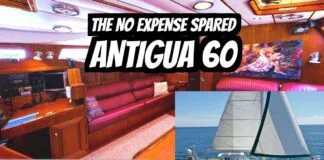
The No Expense Spared Antigua 60 Cruising Sailboat Soolaimon

How To Buy Sails – With Joe Cooper

Bavaria C42: What You Should Know | Boat Tour

Universal Diesel Engines – What You Should Know
- Privacy Policy
- Do Not Sell My Personal Information
- Online Account Activation
- Privacy Manager

From Golden Gate Bridge to Farallones: Long-distance swimmer makes history
A 55-year-old grandmother swam 17 hours across the Gulf of the Farallones this weekend, braving jellyfish, darkness, fog, frigid water and the shark-infested “Red Triangle” to become the first person in history to complete the treacherous outbound route.
For Amy Appelhans Gubser, of Pacifica, Friday was like any other day. She worked her usual 10-hour shift in fetal cardiology at UC San Francisco.
Then at 3:25 a.m. Saturday, without a wetsuit, she jumped off a boat into dark waters under the Golden Gate Bridge and began swimming — stopping only when she reached a bobbing buoy at Southeast Farallon Island, 29.7 miles away, at dusk.
Members of her support team, who monitored her safety from a fishing boat, erupted into cheers.
“When I touched it, I was so grateful. Not just that I had this opportunity to complete this swim, but that it went so flawlessly,” she said Monday after riding her bike to the dentist, her voice still raspy from immersion in salt water.
But in the world of extreme marathon swimming, the miles between the Farallon Islands and San Francisco are reputed to be the toughest in the world — with cold, rough water, ripping winds, swirling currents and hungry carnivores.
Until today, only five people have accomplished this swim. They’ve gone the other direction — from the Farallones to San Francisco, also very challenging because it means timing the tides to get through the Golden Gate. But water gets warmer as they go, and less dangerous.
It took five years of planning for Gubser, who has also crossed Lake Tahoe, Monterey Bay, the Catalina Channel, the Strait of Gibraltar and the notoriously difficult channel between Ireland and Scotland, among other adventures.
To guide her journey, immersed in fog above and murky below the surface from a red tide, she followed the fishing boat Pacific Rival, piloted by Capt. Chad Dahlber. A team of seven other people aboard the vessel, all trained in ocean rescue and cardiopulmonary resuscitation, also supported her.
Food was tossed by ropes into the water. In the event of a shark attack, tourniquets and other first aid equipment were on deck. The U.S. Coast Guard wanted to know the color of her swimsuit — black and white, to mimic a fierce Orca — in case a recovery was needed.
Accolades have poured in from across the global community of “open water” swimming, a sport first inspired by Capt. Matthew Webb’s swim across the English Channel in 1875 and more recently popularized by films such as “Nyad,” which documents Diane Nyad’s extraordinary journey from Havana to Key West.
“Congratulations Amy on this astonishing, world-class feat of cold-water endurance and athleticism,” wrote the Marathon Swimmers Federation.
“Support swimmers” joined her for the first few miles; later, she was accompanied by kayaker John Chapman, who sang upbeat ‘80s tunes.
But her happiest hours were spent alone.
“When I swim, it’s the most freeing time for my mind,” she said, “because it just can slow down. I lose track of time.”
“I find it very peaceful. It’s one of the only times my brain actually calms down,” said Gubser, trained as a pediatric intensive care nurse and who now coordinates high-risk fetal care. “Swimming is effortless for me, easier than walking. It feels like I could go forever.”
Sometimes she counts — reaching 77, then repeating. She makes up poems. She imagines solutions to the world’s biggest problems. She plays songs in her head, often fixating on the same verse over and over.
And she amuses herself with the ocean’s oddities.
“We got swarmed by bats!” she said. “It was so funny. One landed on a crewmate. They came from nowhere. What were they doing there?”
Gubser was taught to swim as a toddler by her mother, a lifeguard. She grew up on Southern California beaches and attended the University of Michigan on a swimming scholarship. Her husband, Greg Gubser, is Deputy Harbor Master at the San Mateo County Harbor.
She trains by swimming many miles a week in the chilly San Francisco Bay with fellow members of the South End Rowing Club at Aquatic Park, with additional training in a Burlingame pool to perfect her technique. She weighs over 200 pounds, a deliberate effort to help fend off hypothermia.
Saturday was chosen because it offered a strong ebb current. With the gravitational tug of a new moon, tides swung from six feet to negative one foot — sending millions of gallons of water rushing through the Golden Gate, launching her out into the Pacific.
And winds were unusually calm, never exceeding seven knots. The water was glassy, without the white caps to battle.
“We waited for the perfect weather,” she said. Once aboard the boat, she ate rice cakes, topped by peanut butter and honey, for energy. She wore only her suit, a cap and goggles.
But before even getting wet, Gubser faced a challenge: a passing container ship. This delayed her start, which had been exquisitely timed to coincide with the optimal tide, currents and time needed to get to safety before sharks’ evening dining hours.
Once in the water, another container ship passed, fewer than 200 feet away.
“I could hear the engines underwater,” she said. “It was honking, and all I could see were these lights in the fog, so I knew it was close. You play ‘Frogger’ with container ships for the first 12 miles, because that’s the shipping lane.”
But then Mother Nature offered an assist. Aboard a ripping ebb tide, Gubser was propelled about one-third of her route in merely four hours.
“Mr. Toad’s Wild Ride,” she joked. She glowed in the dark, wearing a small blue light on her head and a green light on her butt.
Miles out, the tide eased — and she needed to power herself. She gutted out the remaining distance in 13 hours, swimming freestyle the whole way. Every half hour, the crew tossed her containers of three ounces of chicken bone broth, accompanied by a carbohydrate drink for energy. When she felt sleepy, they gave her a caffeine-rich goop.
The jellyfish came in waves, stinging an estimated 20 times.
The water was murky, caused by a red tide algae bloom. Enveloped in fog, “it was almost like being in a sensory deprivation chamber. The sky was gray and the water was brown. I couldn’t see past my fingertips.”
As she approached the Farallon Escarpment — steeply sloped, reaching a depth of over 6,000 feet — the water temperature plunged to 43 degrees.
Worried, her crew saw her skin start to turn pale. They gave her hot chocolate and warm water to pour over her neck and on her hands. But under the rules, she was not allowed to touch the boat.
“I knew that I would feel horrible if I didn’t finish at that point,” she said. “I’ve got kids and grandkids, and I wanted them to be proud of me.”
“I dug deep,” she said. “I wanted to show that, if you put your mind to something, you can do anything.”
©2024 MediaNews Group, Inc. Visit at mercurynews.com. Distributed by Tribune Content Agency, LLC.

IMAGES
VIDEO
COMMENTS
History. It was founded in 1958 by George O'Day, the American Olympic and World champion sailor.. George O'Day sold the company to Bangor Punta Corporation in 1966. Bangor Punta also acquired other boat builders around that time including Cal Yachts and Starcraft Marine. Bangor Punta was later acquired by Lear Siegler.O'Day went out of business in 1989.
Founded by famed Americas Cup sailor and olympic medalist George O'Day. In the beginning George O'Day Associates was only a distributor for several brands of small Sailboats. Some were produced by Fairey Marine of England and Marscot Plastics in the USA. (O'Day took over Marscot in 1958 to build the RHODES 19.) Soon he became involved in producing his own line of boats. Among the most ...
Sailboat. O'Day Super Swift. 1966 • 3.9 m. Founded by famed Americas Cup sailor and olympic medalist George O'Day. In the beginning George O'Day Associates was only a distributor for several brands of small Sailboats. Some were produced by Fairey Marine of England and Marscot Plastics in the USA. (O'Day took over Marscot in 1958 to ...
The resulting Day Sailer was a 16'9" centerboarder with a displacement of 575 lbs, which makes for a light load to tow behind the family car. The fractional sloop rig includes a generously sized spinnaker for exciting downwind sailing.The first Day Sailer was sold in 1958 and immediately became popular in the recreational and racing markets.
O'Day sailboats have firmly anchored themselves in the chronicles of American sailing history. Their emphasis on stability, performance, and affordability made them a favorite among recreational sailors. And while they might not be the epitome of luxury or racing prowess, they undoubtedly offer a balance of quality and value. O'Day ...
When it comes to sailboats, the name O'Day is iconic. The boat company started by world class racing sailor George O'Day in 1958 produced more than 30,000 of nearly 60 different models before it closed in 1989. These were mainly small, family boats like Javelin, Widgeon, and Osprey - all inexpensive, easy to trailer and sail.
See the link below for additional history: Additional History. In 1958, Ray Hunt, a noted sailboat designer, drew up the 22 ft 8 in. V-hull inboard "Hunter" model for O'Day Associates. (For more information and an image, see Sports Illustrated, January 26, 1959). This may have been the design leading to the Hunter 19 outboard tested by Mercury ...
The O'Day 19 is a recreational keelboat, built predominantly of fiberglass. It has a fractional sloop rig, a raked stem, a slightly reverse transom, a transom-hung rudder controlled by a tiller and a fixed stub keel, with a centerboard. It displaces 1,400 lb (635 kg) empty and carries 300 lb (136 kg) of ballast, of which 52 lb (24 kg) is the ...
Discount Sails-O'Day_26. Electric Yacht. New Rudders. Pelagic Autopilots. Boating Closeout. top 1 ads row1. top 2 ads row2. top 3 ads row2. O'DAY 26. ... Like the LWL, it will vary with the weights of fuel, water, stores and equipment. A boat's actual draft is usually somewhat more than the original designed or advertised draft. For boats ...
The O'Day 39 is an American sailboat that was designed by Philippe Briand as a cruiser and first built in 1982.. The boat is a development of the Sun Fizz 40, which was licensed for production in the US by Jeanneau.Both Jeanneau and the O'Day Corp. were owned by US conglomerate Bangor Punta at the time.. The O'Day 39 design was developed into the O'Day 40 by C. Raymond Hunt Associates in 1986.
O'Day 20 is a 19′ 7″ / 6 m monohull sailboat designed by Raymond Hunt (C.R. Hunt & Assoc.) and John Deknatel and built by O'Day Corp. between 1973 and 1979. ... The lower a boat's ratio is, the less power it takes to drive the boat to its nominal hull speed or beyond. Read more. Formula. D/L = (D ÷ 2240) ÷ (0.01 x LWL)³ D: Displacement ...
The O'Day Gold Medal Fleet Catalog for 1973 Featured the O'Day 23, O'Day 22, Mariner 2+2, Rhodes 19, Day Sailer II, Javelin and Widgeon sailboats. GG Archives REF: BPODY-010-1972-C-CAT O'Day 1977 Yachts Catalog
O'Day's sales brochures for its first keel boat were hyperbolic: a "luxurious cruiser," "big, airy sleeping accommodations for five," "a truly superior yacht.". But at a sail-away price of under $7,000, the first O'Day 27s were an instant hit. By the end of their run, they cost $14,500. By today's standards, the boat's ...
The O'Day Sailboats Corporation actually began building boats in 1958 at a plant located at 168 Stevens Street in Fall River, and they stayed there for nearly twelve years building literally thousands of boats. Day Sailers, Rhodes 19s, Tempests, International Tempests, Osprays, Javelins, Widgeons, Sprites, Seven-Elevens, Swifts, Super Swifts ...
The O'Day 30 Sailboat: Keel and Centerboard Wanderers. The O'Day 30 is about to make a bunch of sailors very happy, and a bunch of builders a little nervous. As the largest 30 footer around, it's a very ambitious boat, reaching right into the heart of the fine quality 30 foot market. It can sail with the high-priced race boats (Hull #1, a keel ...
Related Sailboats: O'DAY 22 MH : Download Boat Record: Notes. One of the most successful of all O'Day models with more than 3000 built. A fractional rig was adopted after 1980 (as shown here). Available with keel/cb and fixed keel. (The version with a mashead rig listed here as O'DAY 22 MH) Sailboat Forum ...
Published: June 14, 2000 Updated: October 26, 2021. 2. The first O'Day 30 we saw back in 1977 was named Moby Dick. Compared to most of the boats in our boatyard, she did look a lot like a great white whale: beamy white hull with high topsides, white deck, white cabin trunk, and not much exterior wood trim. But what really struck us about the ...
O'Day 322 is a 32′ 1″ / 9.8 m monohull sailboat designed by Raymond Hunt (C.R. Hunt & Assoc.) and built by Bangor Punta Corp. and O'Day Corp. between 1986 and 1989. ... The lower a boat's ratio is, the less power it takes to drive the boat to its nominal hull speed or beyond. Read more. Formula. D/L = (D ÷ 2240) ÷ (0.01 x LWL)³ D ...
O'Day 23-2. This model was introduced in 1978 and built until 1984, with 1000 examples completed by O'Day in the US and Mariner Construções Náuticas Ltd in Brazil. It has a length overall of 23.00 ft (7.0 m), a waterline length of 19.50 ft (5.9 m), displaces 3,425 lb (1,554 kg) and carries 1,200 lb (544 kg) of lead ballast.
1. O'Day Boats was around a long time by fiberglass boatbuilding standards—about 30 years. Originally O'Day was a leader in small boats typified by the Fox-designed Day Sailer. O'Day 22 Specifications. By the early '70s O'Day had moved into the trailerable cruising boat market. In the meantime the firm was acquired by Bangor Punta ...
O'Day 302. The O'Day 302 is a recreational keelboat, built predominantly of fiberglass. It has a masthead sloop rig, with a fully-battened mainsail, a raked stem, a reverse transom, an internally mounted spade-type rudder controlled by a wheel and a fixed wing keel. It displaces 7,200 lb (3,266 kg) and carries 2,400 lb (1,089 kg) of ballast.
Then at 3:25 a.m. Saturday, without a wetsuit, she jumped off a boat into dark waters under the Golden Gate Bridge and began swimming — stopping only when she reached a bobbing buoy at Southeast ...
40 to 50 indicates a heavy bluewater boat; over 50 indicates an extremely heavy bluewater boat. Comfort ratio = D ÷ (.65 x (.7 LWL + .3 LOA) x Beam^1.33), where displacement is expressed in pounds, and length is expressed in feet. Capsize Screening Formula (CSF): Designed to determine if a boat has blue water capability.